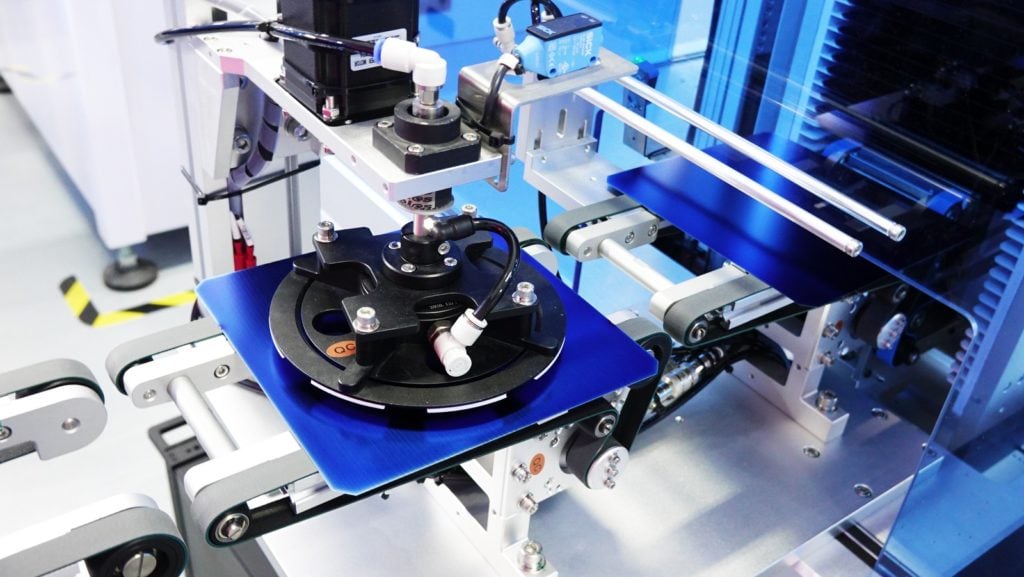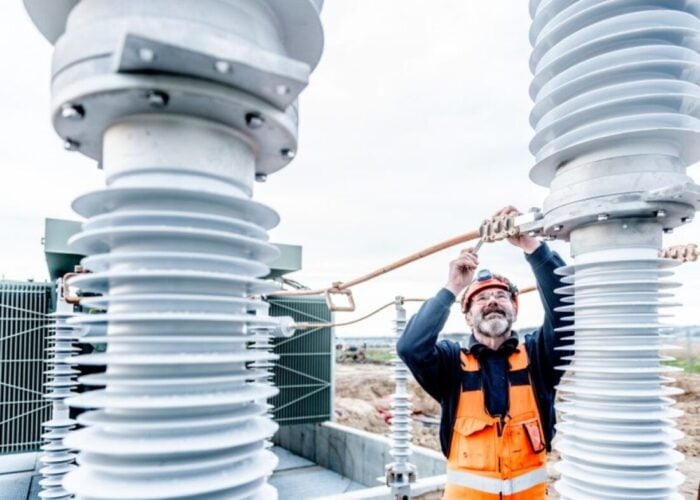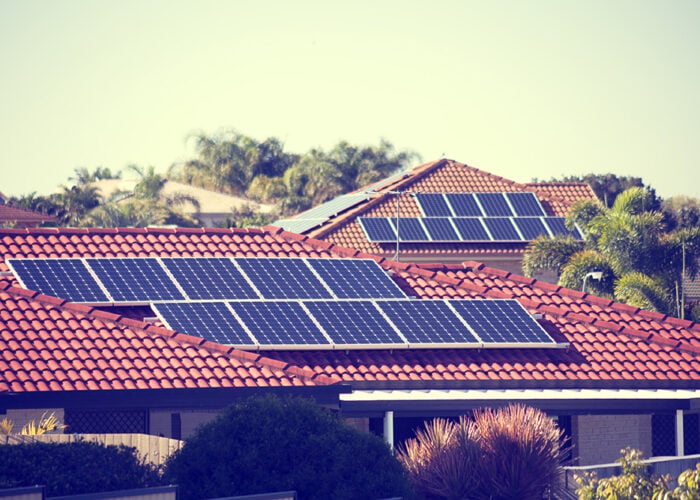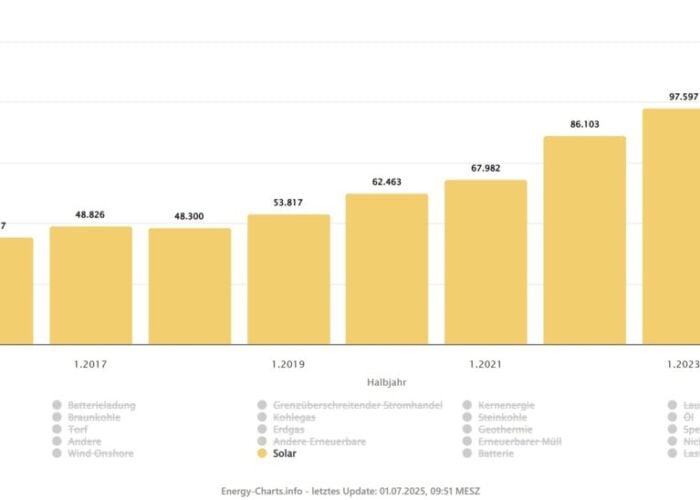
PV Tech Premium caught up with the French solar PV manufacturing startup Carbon to discuss its plans for expansion, inclusion in a European research and development (R&D) ecosystem and how to redress the balance of EU solar supply.
Since its emergence onto the scene in mid-2022 with plans for 5GW of cell production in France by 2027 and a 20GW target by the end of the decade, Carbon has had some of the most ambitious plans and rhetoric in the solar industry. It has set out plans for an entirely non-Chinese, integrated and sustainable operation in Southern France buying traceable polysilicon and selling on part of its cell capacity to other, similarly-minded European players.
Unlock unlimited access for 12 whole months of distinctive global analysis
Photovoltaics International is now included.
- Regular insight and analysis of the industry’s biggest developments
- In-depth interviews with the industry’s leading figures
- Unlimited digital access to the PV Tech Power journal catalogue
- Unlimited digital access to the Photovoltaics International journal catalogue
- Access to more than 1,000 technical papers
- Discounts on Solar Media’s portfolio of events, in-person and virtual
In its latest announcement, the company confirmed its technological roadmap. “For the short term, TOPCon (tunnel oxide passivated contact) and TBC (TOPCon back contact), but also to insist on the fact that we have a vision for the near future in tandem technologies,” a spokesperson for Carbon says.
TOPCon has emerged as the dominant next-generation technology for many of the world’s largest solar manufacturers over the next two years due to its relatively simple adaption from PERC manufacturing and its balance of price and power output. More on the emergence of TOPCon and the European solar market can be found here.
European R&D – the ‘vanguard of the mainstream’
Carbon also announced a commitment to funneling 3% of its annual turnover into R&D and its R&D partners. Carbon said that the 3% corresponds to around €40-45 million (US$42.3 million) for use in both its own R&D plans at its “Fab-Lab” and to support operations at its announced research partners, Institut National De L-Energie Solaire (INES) and Commissariat à l’énergie atomique et aux énergies alternatives (CEA) in France and ISC Konstanz in Germany.
Last month, PV Tech published a piece from Radovan Kopecek, co-founder and director of ISC Konstanz, on the emergence of TBC technology and its development hot on the heels of TOPCon. ISC Konstanz is one of the leading research partners with Carbon, and one of the foremost European laboratories for TOPCon and TBC particularly.
Carbon says: “We are working with the CEA on what we call a ‘Fab-Lab’ to really focus the R&D on the industrial topics for our own needs and the industrial ramp-up for gigafactories. There are programmes [elsewhere] on disruptive innovations that are really fine tuning incremental innovation, but here we are working on industrial processes and how to fine tune them, the chemical recipes etc., and also to pre-certify some of our products at the Fab-Lab.”
Ramp-ups for TOPCon capacity are underway elsewhere and the largest manufacturers have up to around 100GW capacity already. Of the 52GW of modules shipped by JinkoSolar in the first three quarters of 2023, for example, around half were TOPCon and the growth of manufacturing capacity in China and the US particularly is going to be focused on n-type technologies, predominantly TOPCon.
But Carbon is planning to unequivocally get behind a European R&D ecosystem and support long-term developments in the region. On TBC it said: “It’s really an incrementation on TOPCon, and we will have 1.2GW at the beginning of the gigafactory for TBC because it’s already mature enough to be on that scale. The ISC is really the vanguard on interdigitated back contacts, so it will help us on that ramp-up.”
Continuing; “We are really willing to help the European R&D ecosystem, to build up an industrial base for them and to really link R&D and industry.”
Such partnerships between research institutes and manufacturers are present in Europe already. Fellow French startup Holosolis has announced a partnership with German research institute Fraunhofer ISE for its planned 5GW module assembly plant.
Carbon continues: “We will not do a gigafactory that will be inert. It’s a moveable thing that can improve through time. Equipment lines are not set to be there for 10 years; in China they are revamping their gigafactories every three or five years.”
To that end the company also has plans for disruptive technologies, in particular tandem perovskite tech. A report from analyst firm Rethink Technology Research has pointed to the money that is beginning to flow into perovskite developments from major solar manufacturers including LONGi, Qcells, GCL System Integrations and First Solar. Much remains to be seen, and nobody has yet cracked the degradation levels that have prevented perovskite tandem cells from being commercially viable, but the path may be clearing.
“It’s not [just] a dream,” Carbon’s spokesperson says, “tandem technology will be implemented in a few years. But we still have to do something that’s already proven, we need to bet mainstream with incremental improvements that will be like the ‘vanguard of the mainstream’.”
European market regulation
A theme of the discussions in the European solar market lately has been the impact of falling module prices and the ensuing concerns over the ability of European manufacturers to survive as they begin to make moves to ramp up their operations. Last week, PV Tech spoke with manufacturers at the recent Solar and Storage Live 2023 event about their views on the market in light of stock backlog in Rotterdam and the recent low prices.
On top of that, the EU is currently considering a proposal from two of its committees to pass a law banning the import and export of any products that are exposed to forced labour in the EU market, the ramifications of which for supply remain to be seen. The US’ Uyghur Forced Labor Prevention Act, which serves as a model for a European regulation, apparently resulted in around 2GW of solar modules being held at customs in 2022.
In our conversation, Carbon joins the growing chorus of voices calling for intervention and proactive moves to protect the EU market from what the European Solar Manufacturing Council has called “intentional and purposeful attack by Chinese PV manufacturers.”
“It’s not the actual prices that are a concern. The concern is the deregulation of the sector and the volatility of the prices, because we don’t know where we will land in two years if there are no regulatory frameworks,” the company says.
Earlier in the year the trade body European Solar Manufacturing Council (ESMC) issued an open letter to the EU calling for regulatory safeguarding to ensure the security of European manufacturers. In the letter, the ESMC called for measures including an emergency acquisition of European manufacturers’ PV module inventories and measures to ban modules produced with forced labour, which overwhelmingly stem from China.
In many cases, module prices at the moment do not cover production costs, Carbon says, “even Chinese production costs.
“In Europe we have to protect ourselves; we need to objectivate the dumping, demonstrate that they are selling below production costs and that it cannot go further. [Otherwise] in a few months we will experience selling at the opportunity cost, because they have PERC (passivated emitter rear contact) modules in the warehouses in Rotterdam but the market is switching to TOPCon. So, they will just sell [the PERC modules] for the price of the stock or the transportation, perhaps as low as 5 cents per watt peak.”
What next…
The possibility of a European manufacturing revival isn’t at all certain, and there are potent challenges facing a young company like Carbon trying to enter a sector that’s lain dormant for over a decade, price not least among them.
There have already been examples of companies abandoning or scaling back European plans in favour of the incentives offered under the US’ Inflation Reduction Act, and the ongoing concentration of production in China raises supply resiliency concerns.
Today, another trade body SolarPower Europe (covering the upstream and downstream PV sectors) issued an open letter signed by numerous representative bodies calling for proactive financial support and condemning the notion of trade barriers and tariffs on imports. ‘Stick’- rather than ‘carrot – style tariff measures were explored by German authorities earlier this year.
Carbon offered a threefold solution: “First is to objectivate the dumping and send a message of a ‘hard stop’. We will not accept 5 cents per watt peak, it will just kill everything and new investors will not come to the European PV industry with those prices.
“The second thing is a regulatory framework with a space in the market for local content. The third is the financing – the Temporary Crisis Transition Fund (TCTF) was a good thing for state aid, but it’s still not enough.”
The TCTF was introduced by the EU in March to support the energy transition by speeding up investment and financing.
Carbon said that direct financing support is needed to quickly reshore PV supply, in particular polysilicon from the major European producer, Wacker Chemie. Wacker is one of the relatively few major producers of polysilicon outside of China; according to the International Energy Agency in 2021 80% of global polysilicon capacity was Chinese. At the time of its Q2 earnings call, Wacker CEO Christian Hartel said that the company was “building a new production line at our Burghausen site for cleaning semiconductor-grade polysilicon.”
“We will source our polysilicon outside of China,” Carbon’s spokesperson said, “it’s no secret that Wacker is considering how to switch from Chinese customers to European ones.”
“But of course it needs quite big volumes to help Wacker to remain on solar-grade polysilicon or they will just shut down their factory.”
Carbon called for “something to send a clear message to investors that it’s de-risked; you can go there, invest your money there, there is a market, there is money to make.”







